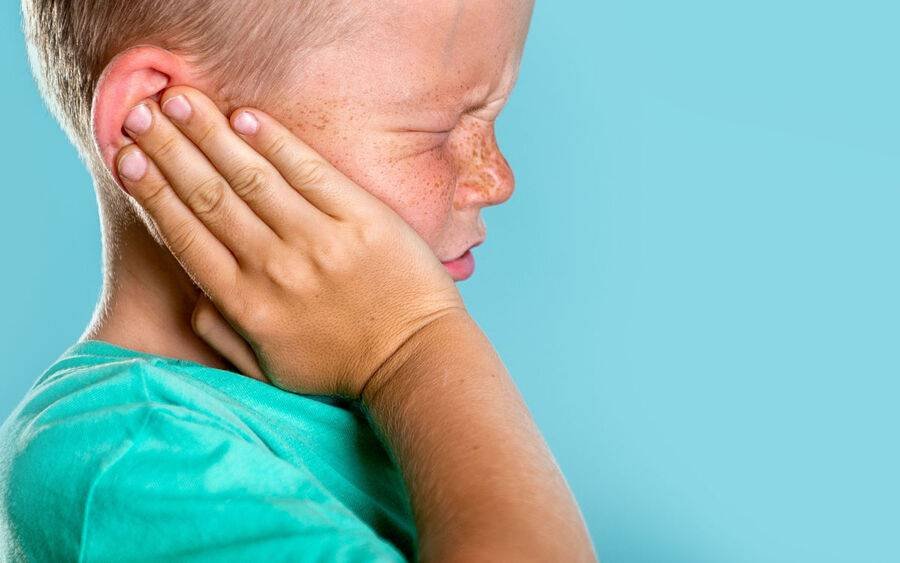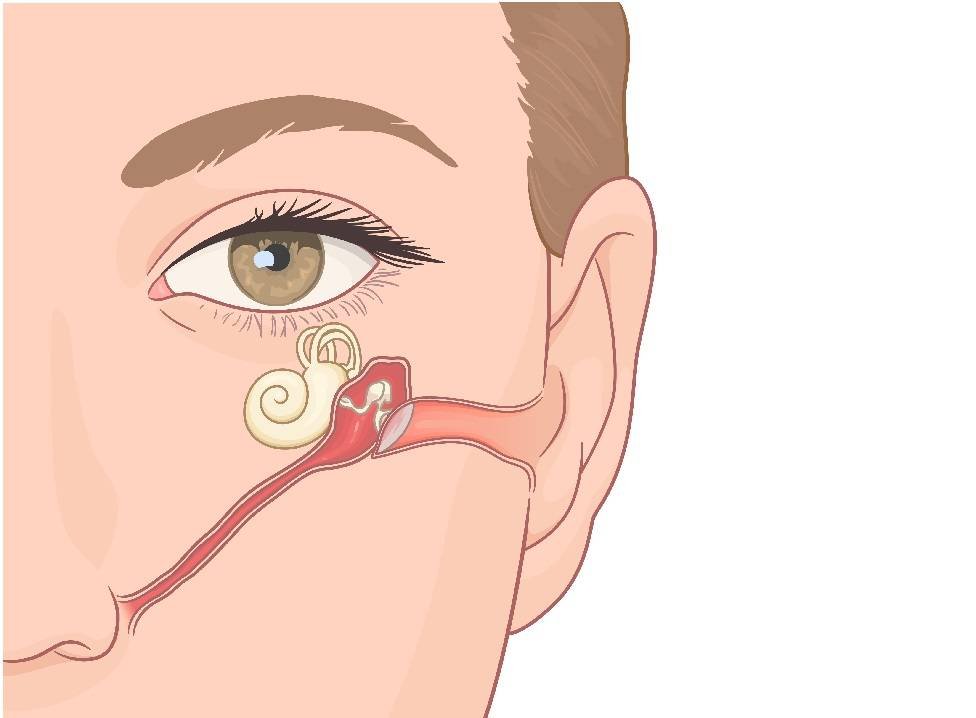Ear infections, a common health issues affecting babies and young children, often leave many parents fraught with worry. The sight of a baby in discomfort can send any parent into a spiral of concern and confusion.
As a parent, it is important to understand the causes, symptoms, and treatment options for ear infections in order to provide the best care for your child.
This comprehensive guide will provide you with all the information you need to effectively manage ear infections in babies and toddlers, offering you the knowledge and tools you need to tackle this condition head-on.
What are Ear Infections?
Ear infections, also known as otitis media, occur when the middle ear becomes inflamed and infected. It is one of the most common childhood illnesses, with the majority of cases occurring in babies and toddlers. This can be caused by bacteria or viruses that enter the ear through the Eustachian tube.
The Eustachian tube is a small passage that connects the middle ear to the back of the throat.
According to the American Academy of Pediatrics, about 5 out of 6 children will have at least one ear infection by their third birthday.
It is important to note that boys are more likely to develop ear infections than girls.
Causes of Ear Infections
There are several factors that can contribute to the development of ear infections in babies and toddlers. The most common cause is a bacterial or viral infection that spreads from the nose or throat to the middle ear.
Other risk factors that can increase the risk of ear infections include:
Exposure to secondhand smoke
Exposure to secondhand smoke can have serious health consequences for babies and toddlers, including an increased risk of ear infections.
Secondhand smoke contains harmful chemicals that can irritate the lining of the Eustachian tube and make it more susceptible to infection.
Secondhand smoke can cause inflammation in the nasal passages and increase the production of mucus. This can lead to congestion and blockage of the Eustachian tube, making it easier for bacteria or viruses to enter the middle ear and cause an infection.
To protect your child from the harmful effects of secondhand smoke, it is important to create a smoke-free environment. This includes not smoking in the presence of your child and avoiding places where smoking is allowed.
Allergies
Allergies can cause inflammation in the nasal passages, which can block the Eustachian tube and lead to the accumulation of fluid in the middle ear.
It's important to take allergy test to determine what your babies are allergic to. Skin prick allergy test is generally considered safe for children and babies.
Colds and respiratory infections
These can cause congestion and inflammation in the nasal passages, making it easier for bacteria or viruses to enter the middle ear.
Bottle-feeding
Babies who are bottle-fed are more prone to ear infections compared to those who are breastfed. This is because the act of sucking on a bottle can cause the Eustachian tube to become blocked.
Pacifier use
Prolonged pacifier use can also increase the risk of ear infections, as it can interfere with the normal function of the Eustachian tube.
Family history
Children with a family history of ear infections are more likely to develop them themselves.
Attending daycare
Children who attend daycare or are in close contact with other children are more likely to be exposed to viruses and bacteria that can cause ear infections.
Types of Ear Infections
There are two main types of ear infections: acute otitis media (AOM) and otitis media with effusion (OME).
-
Acute otitis media (AOM): This is the most common type of ear infection and is characterized by the rapid onset of symptoms such as ear pain, fever, and irritability. AOM is usually caused by a bacterial infection and can be accompanied by fluid buildup in the middle ear.
-
Otitis media with effusion (OME): This type of ear infection occurs when fluid remains in the middle ear after an episode of AOM. OME is typically not associated with severe symptoms and may go unnoticed. However, if left untreated, it can lead to hearing loss and other complications.
Common Symptoms of Ear Infections
Recognizing the symptoms of ear infections in babies and toddlers is crucial for early detection and treatment. Here are the most common symptoms to look out for:
Ear Pain and Discomfort
One of the most noticeable symptoms of an ear infection is ear pain.
Babies and toddlers may tug at their ears, cry more than usual, or have difficulty sleeping due to the discomfort.
It is important to note that not all children with ear infections will exhibit ear pain, especially in the case of Otitis media with effusion (OME).
Fever and Irritability
Fever is another common symptom of ear infections in babies and toddlers. The body's immune response to the infection can cause a rise in body temperature.
Always keep a thermometer at home and keep check of your child's temperature.
In addition to fever, children may also become irritable and have trouble feeding or sleeping.
Fluid Drainage from the Ear
In some cases, an ear infection may cause fluid to drain from the ear. This fluid may be clear, yellow, or bloody.
If you notice any fluid drainage from your child's ear, it is important to seek medical attention as it may indicate a ruptured eardrum.
Diagnosing Ear Infections
If you suspect that your child has an ear infection, it is important to seek medical attention for a proper diagnosis. A healthcare professional will use various methods to determine if an ear infection is present.
Physical Examination
During a physical examination, the healthcare professional will use an otoscope to examine the ear canal and eardrum. They will look for signs of inflammation, fluid buildup, or a bulging eardrum, which are indicative of an ear infection.
Ear Swab and Culture
In some cases, a swab of the ear canal may be taken to determine the specific bacteria or virus causing the infection. This can help guide treatment decisions, especially in cases where antibiotic resistance is a concern.
Tympanometry and Audiometry
Tympanometry is a test that measures the movement of the eardrum in response to changes in air pressure. This test can help determine if there is fluid in the middle ear.
Audiometry, on the other hand, is a hearing test that can assess the extent of hearing loss, if any.
What are Treatment Options for Ear Infections?
The treatment options for ear infections in babies and toddlers depend on the severity of the infection and the presence of complications. Here are the main treatment options:
Watchful Waiting
In some cases, especially for mild ear infections or cases of OME, a paediatrician may recommend a period of watchful waiting. This involves closely monitoring the child's symptoms and providing supportive care, such as pain relievers, while waiting for the infection to resolve on its own.
Antibiotics
If the ear infection is caused by bacteria and is severe or accompanied by complications, antibiotics may be prescribed. It is important to follow the prescribed dosage and complete the full course of antibiotics to ensure the infection is fully treated.
Surgical Intervention
In rare cases, surgical intervention may be necessary to treat chronic or recurrent ear infections. This may involve the insertion of ear tubes to help drain fluid from the middle ear and prevent future infections.
What are Medications for Ear Infections?
In addition to antibiotics, there are other medications that may be prescribed to manage the symptoms of ear infections in babies and toddlers.
Pain Relievers
Pain relievers such as acetaminophen or ibuprofen can help alleviate the ear pain and reduce fever associated with ear infections. It is important to follow the recommended dosage for your child's age and weight.
Ear Drops
Ear drops may be prescribed to help relieve pain and reduce inflammation in the ear. These drops are usually administered directly into the ear canal and should be used as directed.
Home Remedies for Ear Infections
In addition to medical treatment, there are several home remedies that can help alleviate the symptoms of ear infections in babies and toddlers. It is important to note that these remedies should not replace medical treatment, but can be used as complementary measures.
Warm Compress
Applying a warm compress to the affected ear can help relieve pain and reduce inflammation. Simply soak a clean washcloth in warm water, wring out the excess water, and place it gently against the ear.
Garlic Oil
Garlic oil has natural antimicrobial properties and can help fight off the infection causing the earache. You can make your own garlic oil by crushing a clove of garlic and mixing it with a carrier oil such as olive oil. Place a few drops of the garlic oil into the affected ear.
Preventing Ear Infections
While it may not be possible to completely prevent ear infections in babies and toddlers, there are several measures you can take to reduce the risk.
Maintaining Good Hygiene
Practicing good hygiene can help prevent the spread of bacteria and viruses that can cause ear infections. This includes regular handwashing, especially before feeding or touching your child's face.
Vaccination
Vaccination plays a crucial role in preventing ear infections. Make sure your child is up to date with their vaccinations, including the pneumococcal vaccine and the flu vaccine.
Breastfeeding
Breastfeeding provides numerous benefits for your child's overall health, including a reduced risk of ear infections. Breast milk contains antibodies and other immune-boosting substances that can help strengthen your child's immune system and protect against infections, including those that can cause ear infections.
Breastfeeding also helps promote the growth of beneficial bacteria in the gut, which can further support the immune system.
Vaccination and Ear Infections
Vaccination is one of the most effective ways to prevent ear infections in babies and toddlers. Vaccines help stimulate the immune system to recognize and fight off specific bacteria or viruses that can cause ear infections.
Vaccines for Ear Infection Prevention
The pneumococcal vaccine and the flu vaccine are two vaccines that can help prevent ear infections. The pneumococcal vaccine protects against the bacteria Streptococcus pneumoniae, which is a common cause of ear infections. The flu vaccine helps prevent influenza, which can lead to respiratory infections and increase the risk of ear infections.
Vaccination Schedule
It is important to follow the recommended vaccination schedule for your child. Consult with your pediatrician to ensure your child is receiving all the necessary vaccines at the appropriate ages. Click here to find out more about National Childhood Immunisation Schedule in Singapore
When to Seek Medical Help
While many ear infections can be managed at home with supportive care, there are certain situations where it is important to bring your child to see a paediatrician.
Persistent Symptoms
If your child's symptoms persist or worsen despite home remedies and over-the-counter pain relievers, it is important to consult with a healthcare professional. They can assess the severity of the infection and determine if further treatment is necessary.
Severe Symptoms
If your child experiences severe symptoms such as high fever, severe ear pain, or difficulty hearing, it is important to seek medical attention immediately. These symptoms may indicate a more serious infection or complications that require prompt treatment.
Complications
In some cases, ear infections can lead to complications such as hearing loss, speech and language development delays, or chronic ear infections.
If you suspect that your child is experiencing any of these complications, it is important to consult with a healthcare professional for proper evaluation and management.
Complications of Untreated Ear Infections
If left untreated, ear infections in babies and toddlers can lead to various complications that can affect their overall health and development.
Hearing Loss
Untreated or recurrent ear infections can cause temporary or permanent hearing loss. This is because the accumulation of fluid in the middle ear can interfere with the normal transmission of sound vibrations to the inner ear.
Speech and Language Development Delays
Hearing loss caused by untreated ear infections can have a significant impact on a child's speech and language development. The inability to hear and distinguish sounds properly can delay the acquisition of language skills and affect overall communication abilities.
Chronic Ear Infections
Untreated ear infections can become chronic, leading to frequent episodes of pain, fluid buildup, and hearing loss. Chronic ear infections can have a negative impact on a child's quality of life and may require more aggressive treatment, such as surgical intervention.
Conclusion
Ear infections in babies and toddlers are a common health issue that can cause discomfort and affect their overall well-being. By understanding the causes, symptoms, and treatment options for ear infections, parents can provide the best care for their child.
It is important to seek medical attention for proper diagnosis and treatment, and to follow preventive measures such as maintaining good hygiene, vaccination, and avoiding secondhand smoke.
Early detection and treatment of ear infections are crucial for promoting ear health and preventing complications in babies and toddlers.







